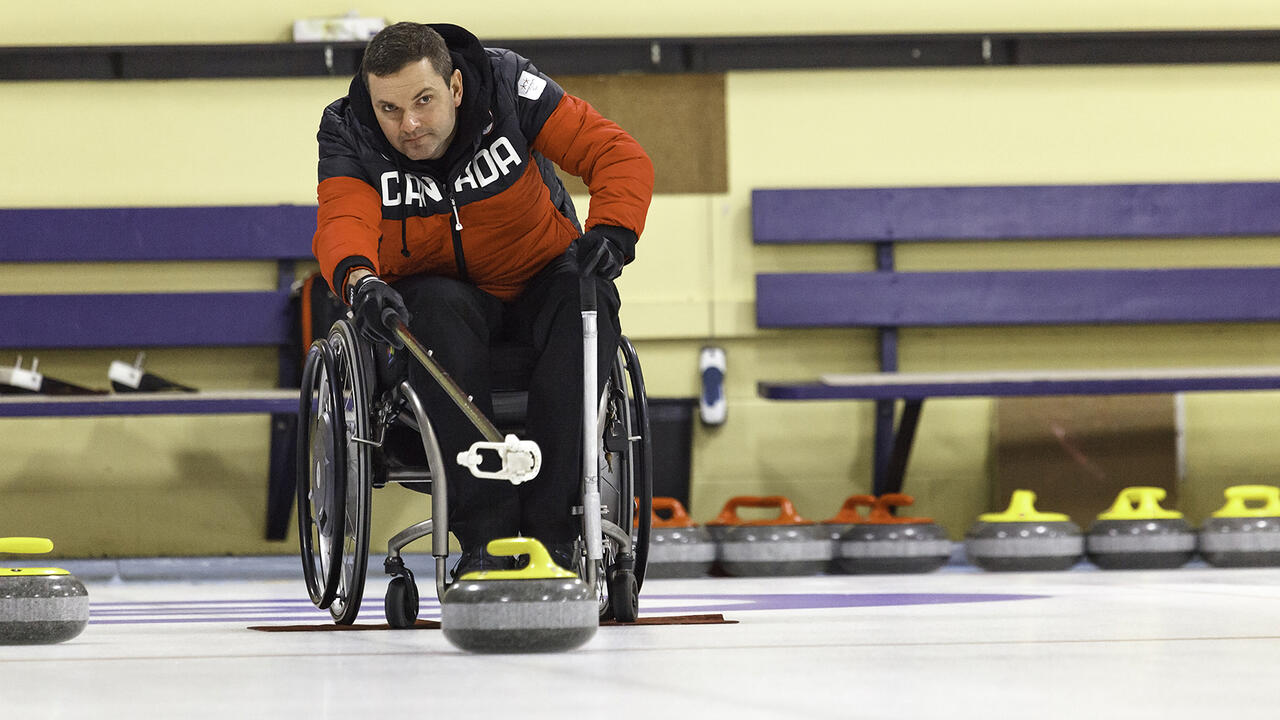
Engineering innovation for wheelchair curlers
Waterloo researchers develop a 3D-printed device to give Team Canada players better shot control.

Waterloo researchers develop a 3D-printed device to give Team Canada players better shot control.
By Brian Caldwell Faculty of EngineeringJohn McPhee thought it would be easy to design a device to give Canada’s competitive wheelchair curlers better control of their shots.
Eighteen months and seven prototypes later, he doesn’t mind admitting it hasn’t been easy at all.
The surprisingly complex problem has so far required hundreds of hours of work by McPhee, a systems design engineering professor at the University of Waterloo, and four of his students.
“When Team Canada described it to me, I thought ‘how hard can it be?’” he said. “It turns out it was very, very difficult.”
The latest product of all their brainstorming, designing, computer modelling, testing and revision is a plastic, 3D-printed device with two metal springs, four moving parts and an all-important clamp mechanism.
Dubbed an end-effector, or curling head, the device screws onto the end of the stick that wheelchair curlers use to throw their rocks.
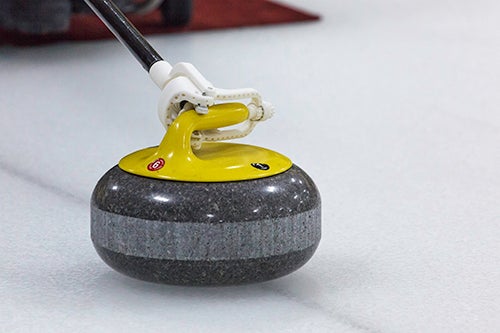
Photo by: Victor Martello, Maplesoft. A device designed by Waterloo Engineering researchers holds a curling rock firmly so it can be drawn back, but releases at the end of the shot so it can slide on towards its target.
The spring-loaded clamp securely holds the rock handle at first but is designed to release due to momentum at the end of the throwing motion so the rock can slide smoothly- towards its target.
Like their able-bodied counterparts, the device would allow wheelchair curlers to pull a rock back to free it from friction at the start of their shot, before pushing forward as usual to complete their shot.
The goal is more speed, control, consistency and accuracy for curlers, who currently use standard equipment that only allows them to push rocks forward, not pull them back first.
“Ice can get sticky and if the first half of your push is just overcoming that friction force, you’ve got very little room left to control the speed of the curling stone,” said McPhee, whose group uses software from Maplesoft, a Waterloo spinoff company, to model the prototypes.
The idea for the innovation came from Team Canada skip Mark Ideson, who had seen several of his international competitors use an improvised system with double-sided tape to enable them to pull their rocks back.
After previously working with Waterloo researchers on biomechanical modelling to improve performance and prevent injuries, Ideson sought out McPhee and his team in the Motion Research Group for help.
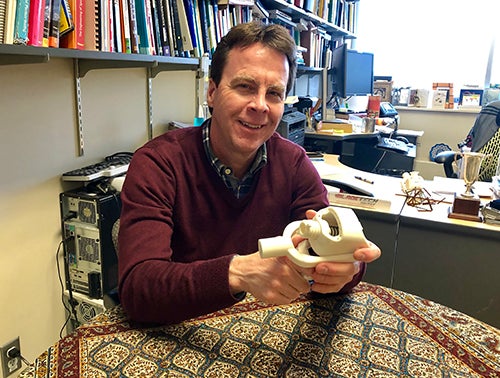
Engineering professor John McPhee displays the seventh prototype of a device designed to give wheelchair curlers better control of their shots.
“We thought it would be nice to have people smarter than us come up with something better than double-sided tape,” Ideson said. “It’s proven to be a tricky project, but I think we’re really close.”
Part of the challenge involves the irregular shape of the handles on curling rocks. An early idea for a trigger mechanism also had to be scrubbed because some of the curlers, including Ideson, don’t have adequate dexterity to use one.
“This isn’t the first time I’ve had a design problem that turned out to be much harder than it appeared,” said McPhee. “There may be a lesson there.”
Making the device adjustable to compensate for different ice conditions, as well as light enough for curlers to wield on the end of a long stick, has also added to the complexity of the project, which was primarily tackled by graduate students Borna Ghannadi and Conor Jansen.
The latest iteration, the Mark 7 — aptly named in honour of Ideson, winner of gold and bronze medals at the last two Winter Paralympic Games — was delivered to members of the national team just before Christmas.
Ideson said that while this didn’t leave enough time for testing and fine-tuning to officially use in Scotland’s world championships in March, he plans to put the device through its paces when he gets home. He’s hopeful it’ll be game-ready with a few tweaks and more practice.
“If we can get the mechanism working as well as I think we can, it will definitely increase the level of performance,” Ideson said. “It’s exciting to be working on something that could really help our game.”
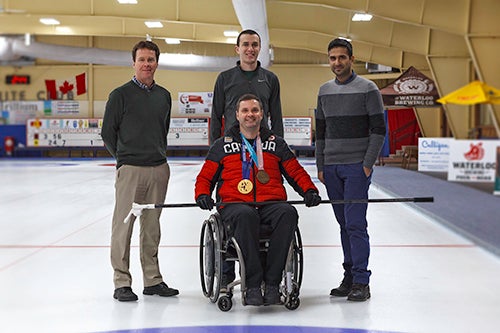
Photo by: Victor Martello, Maplesoft. John McPhee (left to right), Conor Jansen and Borna Ghannadi of Waterloo Engineering pose with Team Canada skip Mark Ideson during testing of a new curling head.

Read more
The Waterloo community comes together to remember, reflect and respond to gender-based violence

Read more
Shop Canadian this holiday season with festive porch plants, fashion-forward apparel, craft spirits and more from Waterloo entrepreneurs
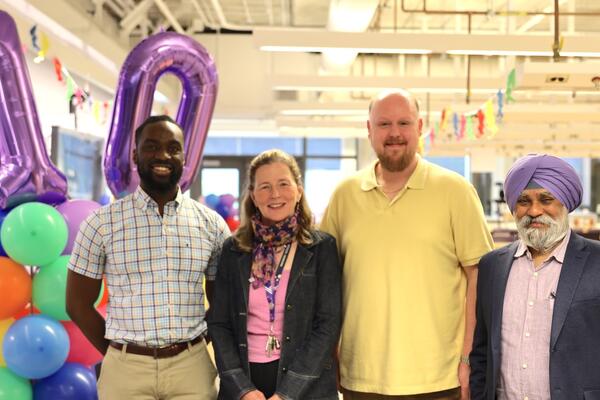
Read more
The Pearl Sullivan Engineering IDEAs Clinic marks a decade of delivering experiential learning embedded in the real world and mentored by industry professionals
The University of Waterloo acknowledges that much of our work takes place on the traditional territory of the Neutral, Anishinaabeg, and Haudenosaunee peoples. Our main campus is situated on the Haldimand Tract, the land granted to the Six Nations that includes six miles on each side of the Grand River. Our active work toward reconciliation takes place across our campuses through research, learning, teaching, and community building, and is co-ordinated within the Office of Indigenous Relations.